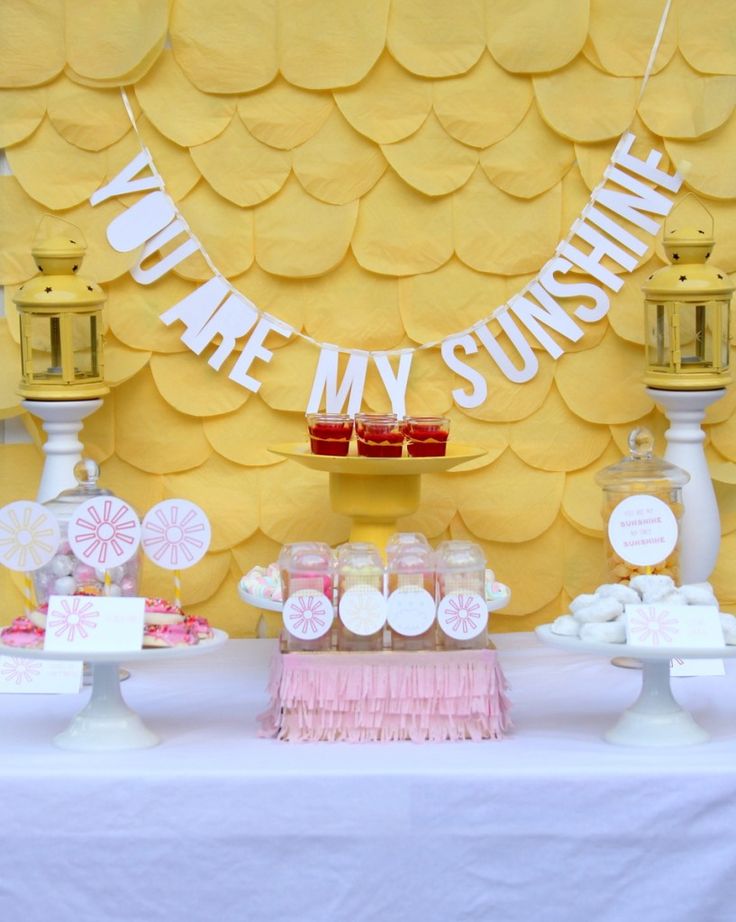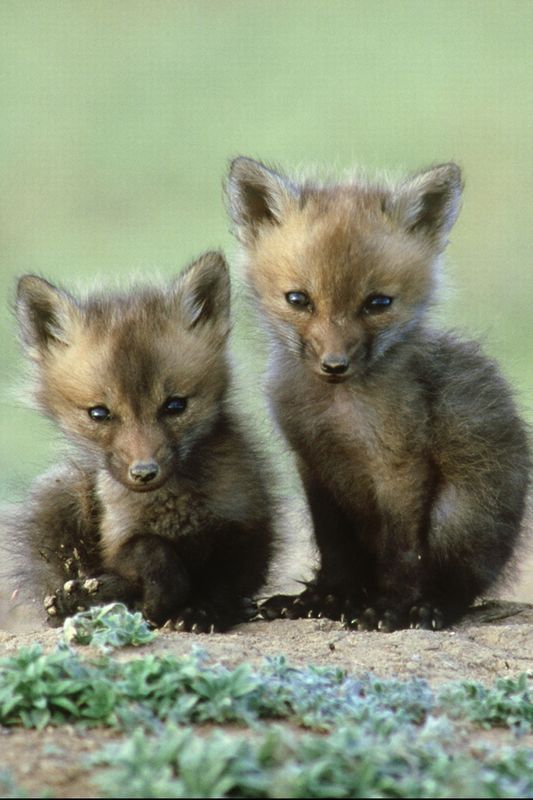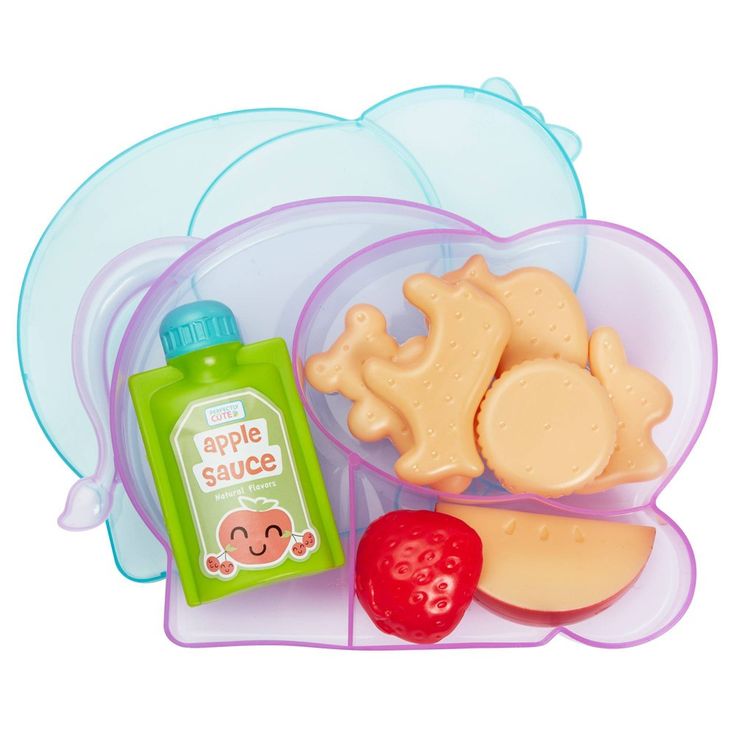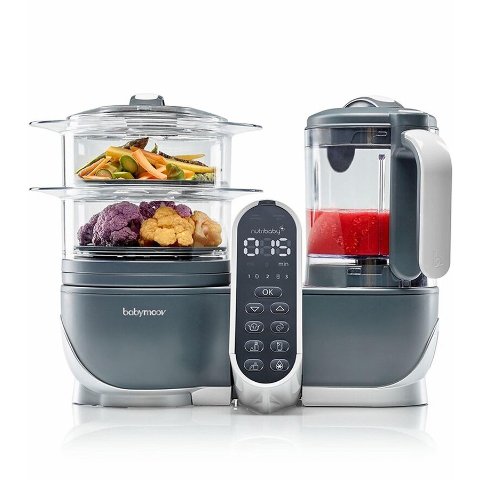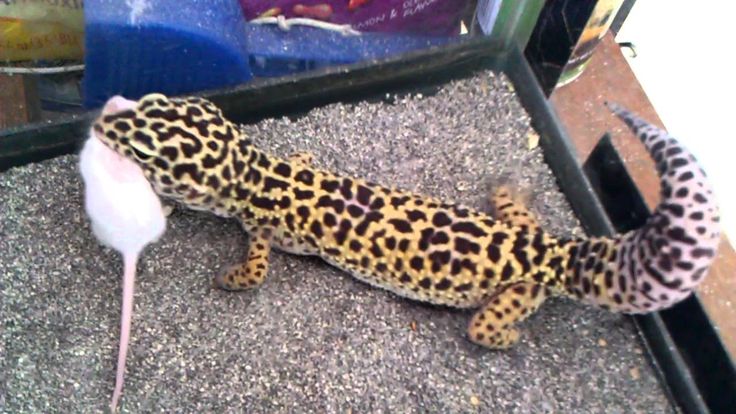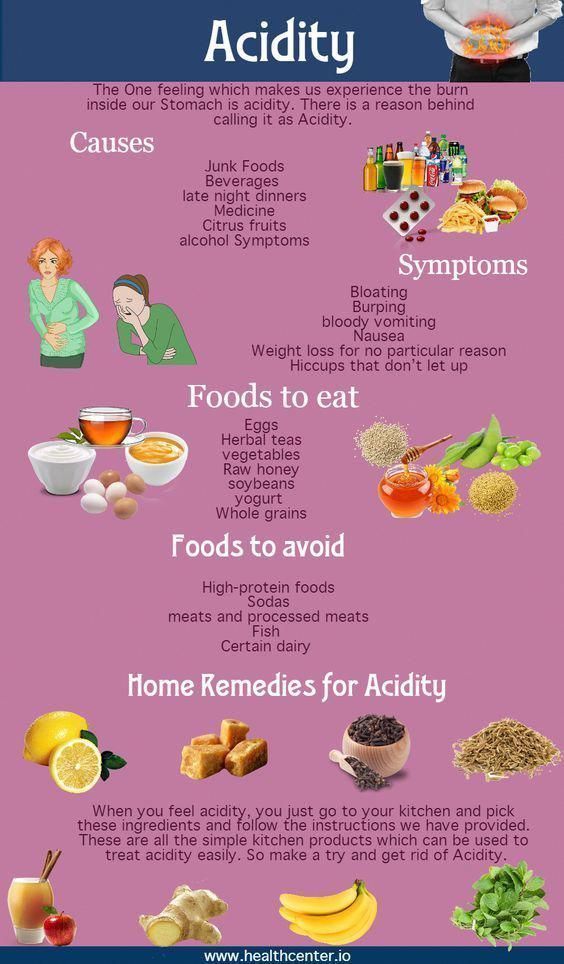Baby feeding tools
Our Favorite Baby Feeding Supplies for Starting Solids
In this guide:
- Spoons
- Bowls and Plates
- Bibs
- Snack Cups
- Placemats
You don’t need a ton of gear to start feeding solids, but a few key items will make the endeavor much easier… especially bibs, bowls, and spoons.
Lucie feeding AliceSpoons
For Introducing Solids (6 Months+)Good spoons are key to successful feeding. Spoons with little spoon-heads are perfect (I just said spoon-head, heh heh). You may want to try a few different ones to experiment – below are some parent favorites.
If you’re doing finger foods (ahem, the fancy-dancy term for this is baby-led weaning…), you may not need any infant spoons yet (they can’t spoon-feed themselves until later). But it’s not a bad idea to have a few on hand.
Munchkin Infant Spoons ~ $3 for 6
Quick and dirty. These rounded, soft spoon bowls are the perfect size. We’ve used these spoons for years and they’ve never let us down.
OXO Silicone Feeding Spoon ~ $8 for 2
A softer version (for teething babes and whatnot). Made with Stainless steel for durability.
For Self-Feeding (Toddler)Nuby Spoons and Forks ~ $8 for 4-pack (2 spoons & 2 forks)
As your kiddo gets older, you’ll want to start him with a larger spoon head and a thicker fork. Usually made of soft plastic, so as to not hurt themselves, and a non-slip handle, these are the gold standard. (See also: the Munchkin version)
RE-PLAY Spoons & Forks Set ~ $10 for 8 (4 of each)
These BPA-free utensils made from recycled plastic are very durable and will last well into childhood. Pick from a vast range of bright color options.
OXO Tot Training Fork and Spoon Set ~ $8
Training silverware is the next step, just before actual silverware. They still have non-slip handles, but their rounded heads are made of stainless steel.
These ones are the best, IMO, but there are many options to choose from: NUK (spoons and forks or set with knife), Skip Hop, Munchkin, etc.
Bowls & Plates
For Introducing Solids (6 Months+)Start with a bunch of plastic bowls for mixing purees. Simple stacking bowls will do the trick. Don’t even think about anything breakable, since bowl-tossing will be your baby’s favorite sport for the next 12 months or so (yes, I just got nailed in the eye the other day, WTH?).
Munchkin Stackable Bowls ~ $8 for 8
These are our favorite kind – you can never have enough and they’re sold everywhere.
NUK Bunch-A-Bowls ~ $7 for 4
Another parent-favorite, these come with lids to take on-the-go.
For Self-Feeding (Toddler)Of course, you can still use the bowls listed above as your baby grows, however, you may want to also stock up on toddler-friendly bowls and plates.
Munchkin Stay Put Suction Bowls ~ $9 for 3
These really do work! They even suction to the stroller snack tray.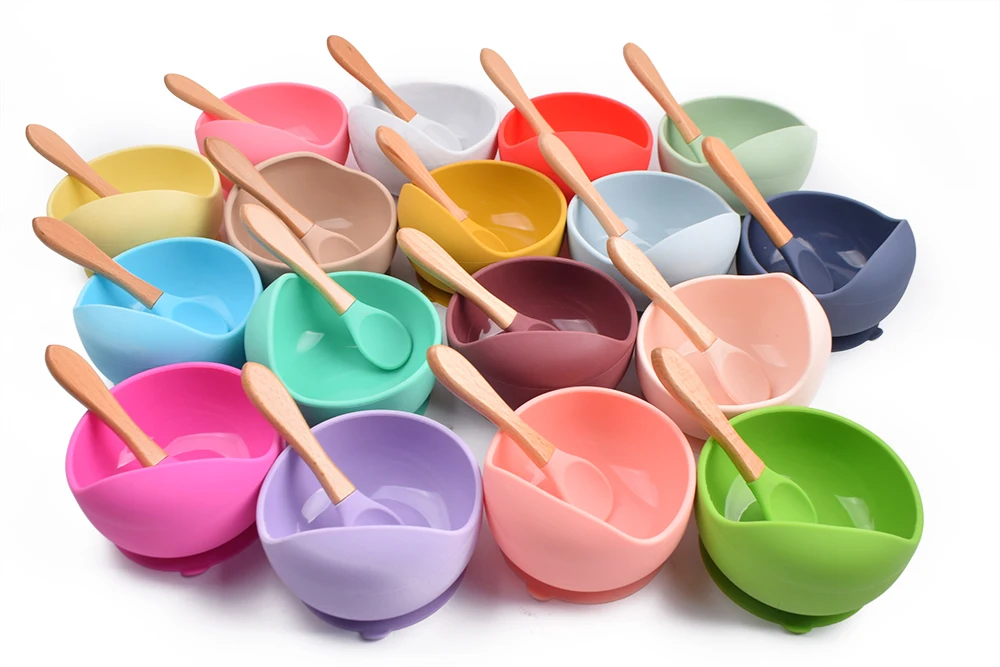
ezpz Happy Mat ~ $25
It’s a placemat and plate in one that suctions to the table: a true game changer for parents. The mat has three compartments for all of the food groups they won’t eat (kidding!) (sort of). Dishwasher safe and easy to travel with.
*Explore the whole collection – including a bowl, mini mat (great for restaurants), and play mat (*this one is so pretty!).
Divided Plate from Target ~ $0.50
Yes, you saw that right => 50 cents! Hands down one of our favorite divided plates — they hold up after years of (ab)use and are dishwasher safe. The sections are the perfect portion size and the walls are just high enough for scoop-training.
P.S. Available in all sorts of sizes and colors.
Bibs
Feeding babies is MESSY, y’all. There’s no getting around it. Some folks opt for shirtless feeding (the BABY, not you, parents), which may save on laundry but will likely require a bath or wipe-down afterward. Personally, I find the dressing/undressing part to be way more work than just throwing on a bib, but whatevs.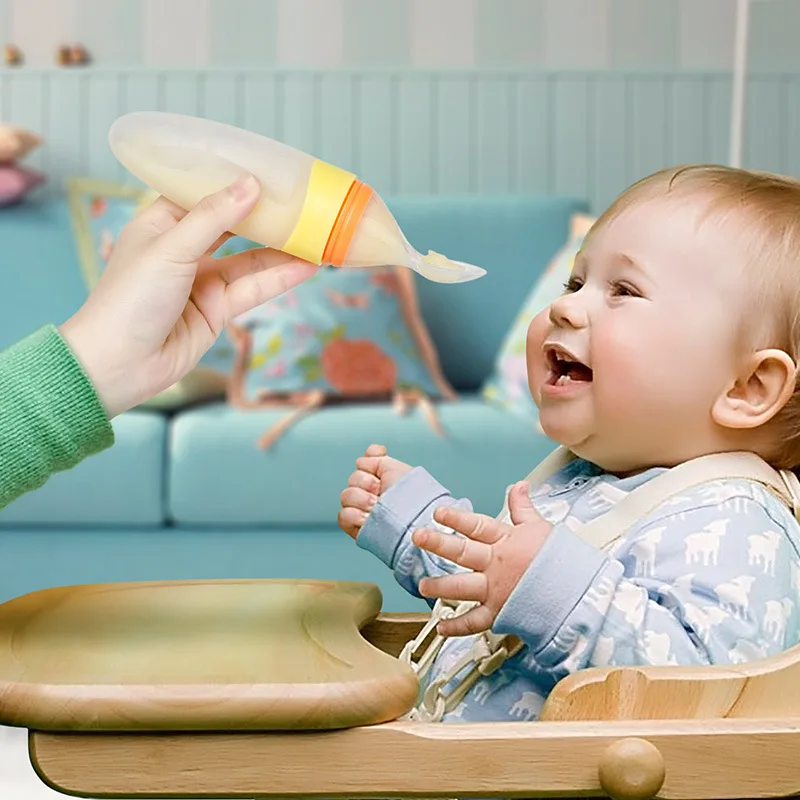
Bibs will prevent (reduce?) stains on your baby’s clothes. They come in different shapes and sizes; some bibs simply go around the neck and protect the top of the shirt, while others have sleeves and can be “worn” for more protection. I recommend you get some of both, depending on what’s on the menu that day {i.e., some foods are messier than others}. Alice loved to finger paint her body (and the dog) with hummus, so I was pretty much screwed on those days.
Basic BibsBumkins Bibs ~ $17 for 3
For a simple, basic bib, this is definitely the group favorite. It’s waterproof, comes in cute designs, and is super easy to wash (in the laundry, even). It also has a catch-pocket, which you will come to appreciate. Best of all, you can fold it up into a compact square and easily throw it in your diaper bag.
*Available in sizes: starter (4-9 months), super (6-24 months), sleeved (6-24 months) and junior (1-3 years).
BabyBjorn Soft Bib ~ $19 for 2
Another crowd-favorite.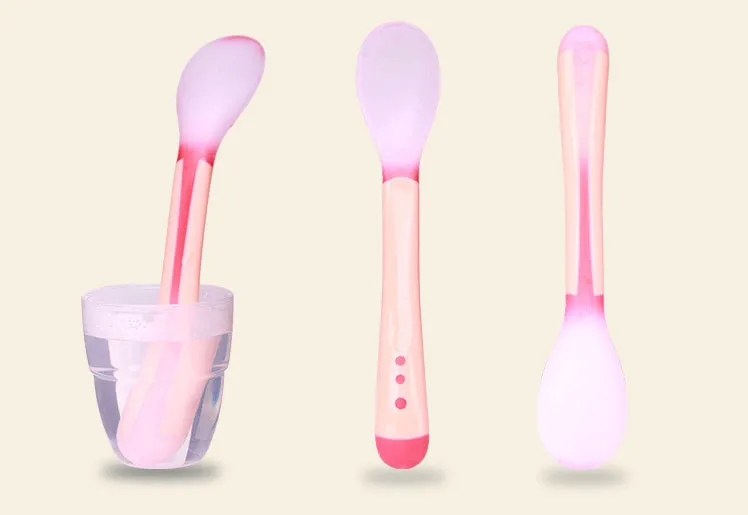 These are super easy to clean, have a deep pocket to catch food, and an adjustable closure to fit a growing baby for many months. These bibs are a bit more sturdy (harder for baby to yank off), but unlike the Bumkins bib, they don’t fold or store as easily.
These are super easy to clean, have a deep pocket to catch food, and an adjustable closure to fit a growing baby for many months. These bibs are a bit more sturdy (harder for baby to yank off), but unlike the Bumkins bib, they don’t fold or store as easily.
These will offer more protection, especially around the shoulders and sleeves.
IKEA “KLADDIG” ~ $9
An affordable, quick and dirty favorite is the nickname, “the angry viking child.” *Fits 0-18 months.
Kushies Cleanbib ~ $19
Parents love this simple, SLEEVED waterproof bib. Though, the price has gone up recently…
Hero Bibs ~ $29
Handmade and specifically designed not only to keep your little one clean, but also the highchair. Just tuck it under the top tray or let it hang over the sides. Also great for art projects and will last through the years.
Miscellaneous
Snack cups
Munchkin Snack Catcher ~ $5 for 2
Every parent’s go-to. The lids prevent food from spilling onto the floor but make it easy for kiddos to reach inside and grab their favorite snack.
The lids prevent food from spilling onto the floor but make it easy for kiddos to reach inside and grab their favorite snack.
*If you’re not into plastics, Munchkin also makes a stainless steel version with a lid ($10).
Nuby Monster Snack Cup ~ $7
A fun twist on the standard snack cup. Kids love holding his monster hands. The lid can be tricky to get on and off – but that just means it’s doing its job. 😉
Placemats
Munchkin Silicone Placemats ~ $10 for 2
If you have a table in need of protecting, make sure you have a couple of these on hand. They measure 11 X 15 and are sticky on the bottom so they stay in place. They’re thin, too, so they’re easy to roll up if you need one for an outing, a picnic, etc. Top-rack dishwasher safe.
(No, I don’t work for Munchkin, I just like their stuff). And yes, they are BPA-free.
Back to: Gear Guides
About the Author
Meg Beilsmith Collins started Lucie’s List in 2010 after learning everything about babies the hard way; she is now the Editor in Chief.![]() She’s an Industrial Engineer from Georgia Tech and a former car seat technician (CPST) who lives near Clearwater, FL with her husband Rich and daughters Lucie and Alice. She enjoys 90s music, MomFit, camping and anything on the water.
She’s an Industrial Engineer from Georgia Tech and a former car seat technician (CPST) who lives near Clearwater, FL with her husband Rich and daughters Lucie and Alice. She enjoys 90s music, MomFit, camping and anything on the water.
21 Best Baby Spoons, Bowls and Plates of 2022
Is baby showing signs that it’s time to introduce solid foods? Get ready for your next parenting adventure! But before you dive into mushy solids and first foods, you’ll want to stock up on child-friendly utensils and tableware. There’s tons of feeding accessories on the market, but a baby plate, bowl and spoon are the basic essentials you’ll need right away. (Oh and a high chair, of course!)
Ready to take the puree plunge? Here’s a list of our favorite baby feeding essentials to help reduce the mess and stress of mealtime.
In this article:
Best baby spoons
Best baby bowls
Best baby plates
Best Baby Spoons
When it comes to giving baby those first bites of food, things tend to get messy, fast—which is why it’s helpful to have a stash of top-notch baby spoons.
The best baby spoons dole out perfect bite-size portions, and fit easily inside your little one’s mouth. And since most infants begin teething around the same time they’re being introduced to solids (around the four- to six-month mark), you’ll want to opt for baby utensils with soft tips made from silicone or other food-grade materials to avoid irritating sore gums. Whether you’re gearing up for self-feeding or want something affordable and easy to clean, these clever utensils are mealtime must-haves.
Image: Courtesy Munchkin
Munchkin White Hot Infant Spoons
You’re probably already familiar with Munchkin’s colorful line of baby gear. But did you know they make baby spoons and tableware too? The tips of these White Hot Infant Safety Spoons turn white if baby’s food is too hot (hence the product name). The tapered shape of the spoon is great for little mouths, and the soft tips are gentle on irritated gums. Plus, these utensils are dishwasher-safe as well as BPA- and phthalate-free, making these some of the best baby spoons around.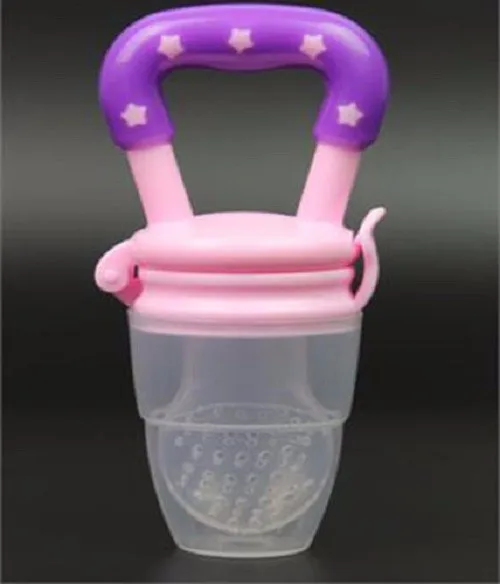
Buy it: $5, Munchkin.com
Image: Courtesy Olababy
Olababy Training Fork + Spoon Set
Once your little one has gotten used to eating bite-sized morsels, it may be time to introduce them to training utensils. This baby spoon has a flexible tip that lets your hungry little one scoop up food from any angle. Meanwhile, the metal-free fork is easy to wield with soft spears that won’t poke or prod baby’s mouth. Plus, both utensils are made from BPA-free, food-grade silicone that’s dishwasher safe. Is it any wonder that this set won a Best of Baby award?
Buy it: $17, Amazon.com
Image: Courtesy Boon
Boon SQUIRT Silicone Food Dispensing Spoon in Mint
Taking baby food on the go is a piece of cake with the Boon Squirt Silicone Baby Food Dispensing Spoon. These baby spoons hold up to three ounces of pureed baby food, and dispense one mouthful at a time for easy one-handed feeding. They’re dishwasher safe, free from harmful chemicals and come with a storage cap.
Buy it: $10, buybuyBABY.com
Image: Courtesy Beaba
BEABA First Stage Baby Utensil Feeding Spoon Set
Crafted from ultra-soft silicone, the BEABA First Stage Baby Spoons are gentle on baby’s gums and teeth and have no rough metal edges. The shallow spoon design lowers the risk of choking by limiting how much food baby can scoop up at once. And, yes, these are dishwasher safe and BPA-, lead- and phthalate-free.
Buy it: $21 for a set of 4, buybuyBABY.com
Image: Courtesy NumNum
NumNum Pre-Spoon GOOtensils
A great way to introduce your baby to self-feeding, GOOtensils are sold in a dual-stage set: Stage one GOOtensil for beginners, and stage two GOOtensil for kids who’ve mastered the food-to-mouth motion. Their flat design makes them easier to use than a regular spoon; there’s no “wrong” way to hold them, so food doesn’t fall off. Plus, the contoured handles are designed to comfortably fit in a small hand. Parents will love that they’re dishwasher safe as well as PVC-, BPA- and phthalate-free.
Parents will love that they’re dishwasher safe as well as PVC-, BPA- and phthalate-free.
Buy it: $13, Amazon.com
Image: Courtesy Oxo Tot
Oxo Tot Fork & Spoon Set
If you’re eager to teach your toddler how to use a fork as well as a spoon, opt for OXO Tot’s utensil set. The soft, non-slip handles are easy for little hands to hold, and the fork is effective without having sharp tines. These baby utensils have BPA-, phthalate- and PVC-free silicone handles and are dishwasher safe.
Buy it: $9, Oxo.com
Image: Courtesy Avanchy
Avanchy 5-Pack Infant Bamboo Spoons
Avanchy’s feeding spoons are crafted from bamboo, and finished with a soft silicone tip that’s gentle on tender gums. Each spoon also has a long, ergonomic handle that helps reduce hand or wrist pain from awkward feeding angles.The only drawback is that—like most wooden items—the spoons aren’t dishwasher safe and should be hand-washed.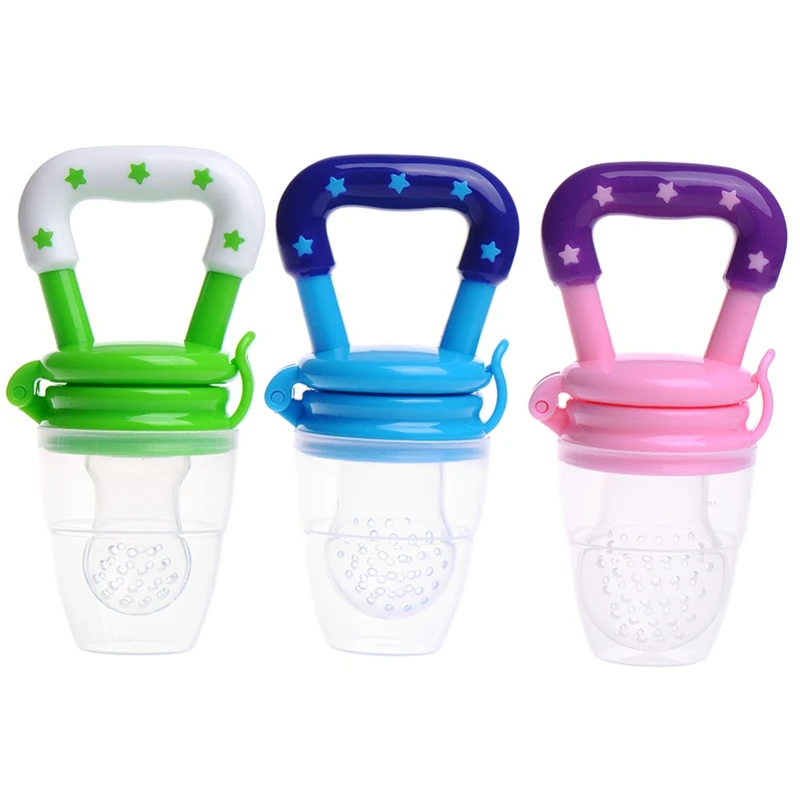
Buy it: $20 for a set of 5, Maisonette.com
Best Baby Bowls
When baby is staring at a bowl of food, it’s hard to nix their instinct to grab it and throw it across the room. Good news: Baby bowls with suction bases, high sides and lids can help keep the mess in check. Here, some of our favorite baby dishes on the market today.
Image: Courtesy Munchkin
Munchkin Stay Put Suction Bowls
First up is Munchkin’s set of three different-sized bowls. The strong suction base keeps baby from being able to throw it across the room, but the quick-release tabs make it easy for parents to remove. These baby bowls are BPA-free as well as microwave and dishwasher safe.
Buy it: $9, Munchkin.com
Image: Maisonette.com
Avanchy Baby Bamboo Stay Put Suction Bowl + Spoon
If you like the idea of a plastic-free baby bowl, but still want it to stay put, the Avanchy Bamboo Spill Proof Stay Put Suction Bowl is an excellent choice. The bowl itself is made out of organic, biodegradable bamboo, and the BPA-free silicone suction base easily attaches to any flat surface. Included with the bowl is a bamboo and silicone spoon that’s perfectly sized for baby’s hands, but not so small that parents will find it difficult to use. Note that this option is not dishwasher safe.
The bowl itself is made out of organic, biodegradable bamboo, and the BPA-free silicone suction base easily attaches to any flat surface. Included with the bowl is a bamboo and silicone spoon that’s perfectly sized for baby’s hands, but not so small that parents will find it difficult to use. Note that this option is not dishwasher safe.
Buy it: $20, Maisonette.com
Image: Courtesy Nuka
NUK Mash & Serve Bowl with Masher to Prep and Serve Baby Food
Interested in making your own baby food but don’t want to invest in extra appliances? Go with the NUK Mash and Serve Bowl. Toss in some steamed fruit or veggies and use the included masher to prep the food to whatever consistency you desire. The non-skid base makes the baby bowl super-easy to use. Plus, it’s microwave and dishwasher safe as well as BPA-free.
Buy it: $14, Walmart.com
Image: Courtesy Bella Tunno
Bella Tunno Get in my Belly Suction Bowl
Next up is a baby bowl that combines style and function. Wonder bowls come in a range of fun options, but we like this bright yellow version that reads “get in my belly.” The dishwasher safe pick has a suction base and curves inwards to prevent spillage. Better yet, Bella Tunno is a brand that gives back. For every product sold, Bella Tunno provides a meal to a child in need.
Wonder bowls come in a range of fun options, but we like this bright yellow version that reads “get in my belly.” The dishwasher safe pick has a suction base and curves inwards to prevent spillage. Better yet, Bella Tunno is a brand that gives back. For every product sold, Bella Tunno provides a meal to a child in need.
Buy it: $18, Maisonette.com
Image: Courtesy SkipHop
Skip Hop Easy-Grab Bowls
Designed with parents’ comfort in mind, Skip Hop’s baby bowls feature a unique comfort-grip handle to take the hard work out of feeding time. Thanks to the ergonomic design, you can easily grip the bowl in one hand, leaving the other hand free to coax baby to eat. The set includes two phthalate- and BPA-free bowls complete with lids, so storing leftovers is easier than ever.
Buy it: $12, SkipHop.com
Image: Courtesy Lalo
Lalo Suction Bowl
This next product ticks every box when it comes to finding the best baby bowl.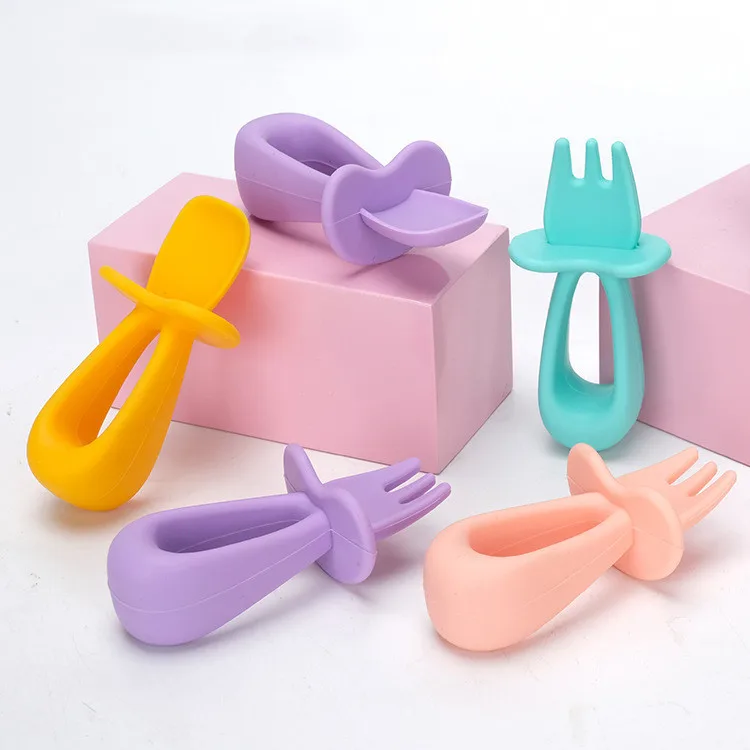 Suction base to keep it in place? Check. Non-toxic BPA-free materials? Check. Curved sides to prevent spillage? Check. Dishwasher and microwave safe? Double check! Lalo’s suction bowl also comes in three cute colors and can be bought in multi-packs too.
Suction base to keep it in place? Check. Non-toxic BPA-free materials? Check. Curved sides to prevent spillage? Check. Dishwasher and microwave safe? Double check! Lalo’s suction bowl also comes in three cute colors and can be bought in multi-packs too.
Buy it: $13, MeetLalo.com
Image: Courtesy Wild and Stone
Wild and Stone Baby Bamboo Bowl and Spoon Set
Searching for a baby bowl made from eco-friendly materials? Check out this tableware set made from sustainably sourced bamboo and food-grade silicone. Designed to look like a smiling sun, the bowl has a removable suction base that adheres to any smooth surface. It comes with a silicone-tipped spoon, with no sharp edges or corners that could harm baby’s sensitive gums or newly-emerged teeth.
Buy it: $23, TheNaturalBabyCo.com
Best Baby Plates
Once your little one has moved on from purees, and ventured into the wonderful world of finger foods, it may be time to pick up a few extra plates.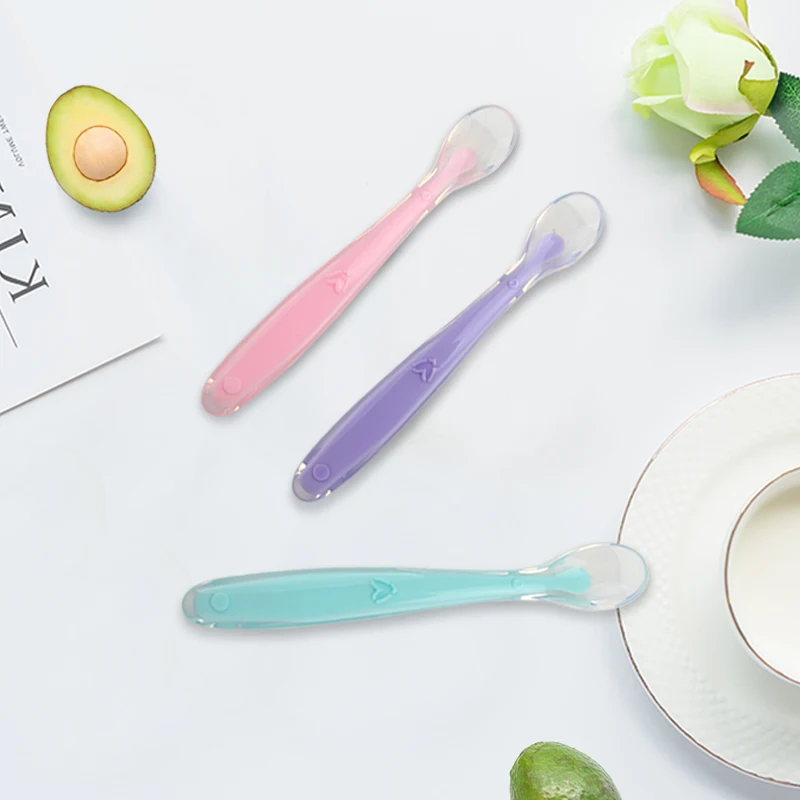 Many baby and toddler plates are divided into neat sections that help you serve up the perfect amount of food—with the added bonus of appeasing picky eaters that don’t like different food groups to touch. Here are a few top-rated baby plates to make mealtime a breeze.
Many baby and toddler plates are divided into neat sections that help you serve up the perfect amount of food—with the added bonus of appeasing picky eaters that don’t like different food groups to touch. Here are a few top-rated baby plates to make mealtime a breeze.
Image: Courtesy Loulou Lollipop
Loulou Lollipop Silicone Suction Snack Plate
Here at The Bump, we’re big fans of the Born to Be Wild tableware collection by Loulou Lollipop (the brand won a Best of Baby award in 2021). The plates are made from 100 percent food-grade silicone that’s free of BPA, phthalates and other harmful substances. Plus, the plates are microwave and dishwasher safe. And, like many of the best baby and toddler dishes, they have a nifty suction base that won’t budge.
Buy it: $20, LoulouLollipop.com
Image: Courtesy ezpz
ezpz Mini Mat
Outsmart baby’s tendency to toss their plate on the floor with ezpz’s Mini Mat, a one-piece silicone plate and placemat combo that suctions to the table (or any flat surface).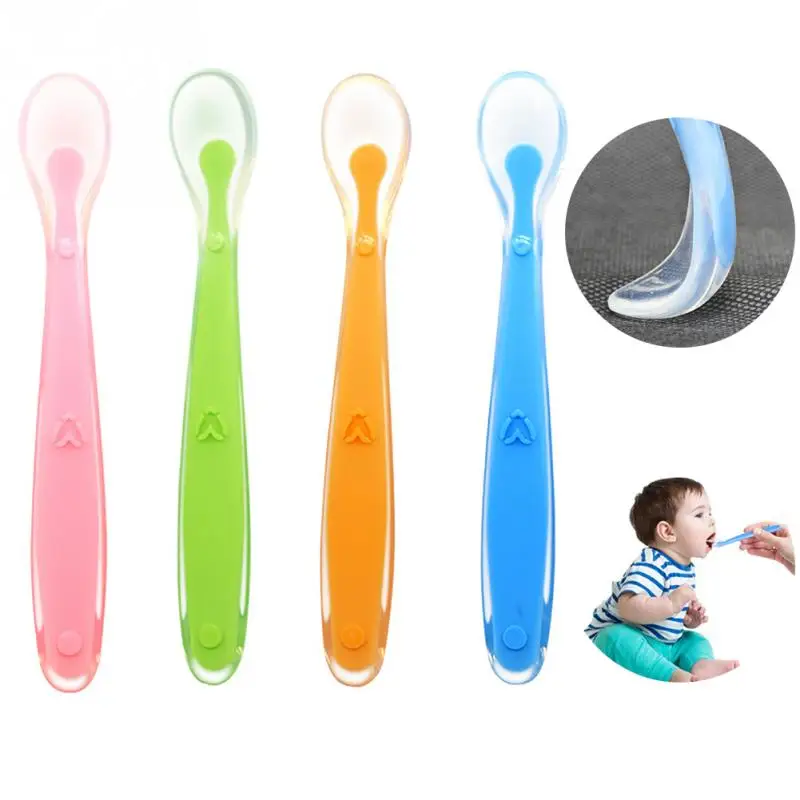 Divided sections encourage parents to serve a variety of foods; plus, and it’s lightweight enough to bring along on trips or dinners out. Made from 100 percent food-grade silicone, it’s BPA-, BPS-, PVC-, lead- and phthalate-free and dishwasher safe. These baby plates even come in a variety of colors. Plus, take 15 percent off sitewide with the code BUMP15.
Divided sections encourage parents to serve a variety of foods; plus, and it’s lightweight enough to bring along on trips or dinners out. Made from 100 percent food-grade silicone, it’s BPA-, BPS-, PVC-, lead- and phthalate-free and dishwasher safe. These baby plates even come in a variety of colors. Plus, take 15 percent off sitewide with the code BUMP15.
Buy it: $20, ezpzfun.com
Image: Courtesy Wee Sprout
Wee Sprout Suction Plates with Lids
WeeSprout Silicone Divided Plates are microwave, dishwasher, oven and freezer safe. Parents will appreciate that the three divided sections have higher sides than other similar products to better reduce spillage. Plus, these baby plates are made of 100 percent BPA-free silicone and come in sets of three vibrant colors.
Buy it: $22, WeeSprout.com
Image: Courtesy Green Sprouts Baby
Green Sprouts Baby Learning Plate Made from Silicone
Parents of little ones who demand that their peas and carrots don’t touch will appreciate this clever dish.![]() It has four separate sections that help you serve up perfect toddler portions of each food group. The learning plate is made from food-grade silicone, and is free from PVC, BPAs and petroleum. It also has a suction base to prevent toppling and an easy-release tab to help you unpeel it from a high chair or table. Better yet, it’s heat-resistant, dishwasher safe and virtually indestructible.
It has four separate sections that help you serve up perfect toddler portions of each food group. The learning plate is made from food-grade silicone, and is free from PVC, BPAs and petroleum. It also has a suction base to prevent toppling and an easy-release tab to help you unpeel it from a high chair or table. Better yet, it’s heat-resistant, dishwasher safe and virtually indestructible.
Buy it: $17, GreenSproutsBaby.com
Image: Courtesy Baby Bjorn
Baby Bjorn Baby Feeding Set
Here’s a dinner set that looks good and works well for little eaters. Each item offers smart design features to make feeding all the better. The unique shape of the baby plate makes it easy for tots to scoop up food and harder to tip the plate. The silverware handles have a ring to prevent baby’s hand from slipping down too far, and a groove to prevent the fork and spoon from sliding into the plate. The set also comes with a grip-friendly cup and an adjustable bib with a spill pocket. (And who doesn’t love the lovely color palette?)
(And who doesn’t love the lovely color palette?)
Buy it: $30, BabyBjorn.com
Image: Courtesy Ahimsa
Ahimsa Balanced Bites Stainless Steel Plates in Rainbow
Looking for an alternative to silicone baby plates and bowls? Check out this stainless steel tableware by Ahimsa. Created by a real-life mom (who also happens to be a pediatrician), the plates are free of BPA, PVC, phthalates, melamine and lead. Plus, steel dishes are incredibly strong and non-porous, meaning they won’t retain bacteria or become discolored over time. Each plate is divided into three sections to help you serve up a balanced meal. Granted, they are a little pricey, but these plates will last a lifetime.
Buy it: $86 for a set of 4, buybuyBABY.com
Image: Courtesy Bumkins
Bumkins Silicone Grip Toddler Dish in Marble
Last up on our list of the best baby plates and bowls, is this stylish pick by Bumkins. Made from soft silicone, this faux-marble dish features three perfectly proportioned sections and a strong suction base that secures to any surface.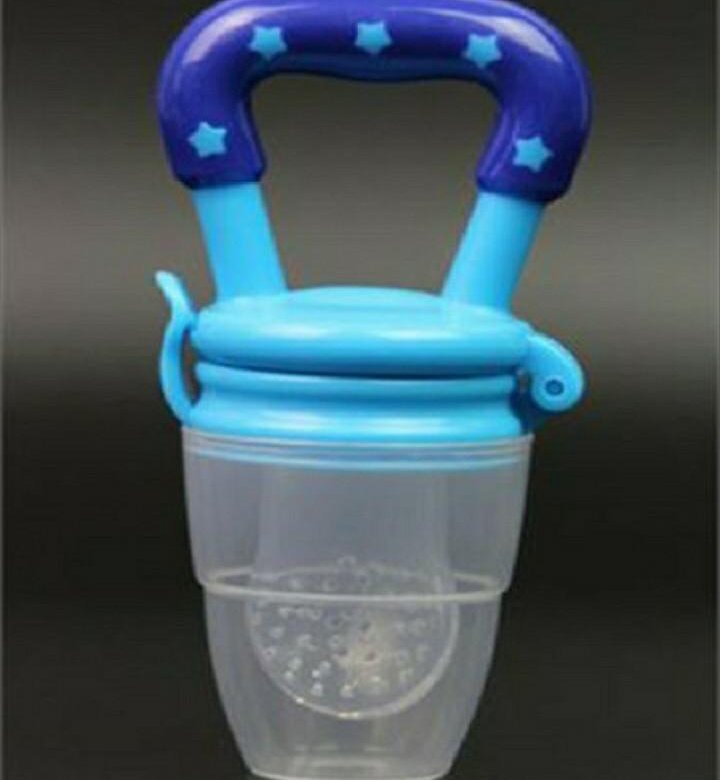 It’s also dishwasher safe and free from BPAs and other harmful chemicals.
It’s also dishwasher safe and free from BPAs and other harmful chemicals.
Buy it: $17, buybuyBABY.com
Plus, more from The Bump:
Dig In! A Guide to Starting Solids
A Step-by-Step Guide to Preparing Avocado Baby Food
How to Make Sweet Potato Baby Food in a Few Simple Steps
A new tool for fast and effective screening of childhood malnutrition will become available in Russia
A new tool will become available in Russia for a fast and effective screening of malnutrition in children
(06/01/2021)
- Abbott introduces a new method quick and effective screening for possible malnutrition in children - the MUAC tape (Mid-Upper Arm Circumference) developed by the Children's Mercy Research Institute 1 . The tape allows you to easily determine the state of the nutritional status of the child on the circumference of the middle third of the shoulder
- The circumference of the middle third of the upper arm is an important parameter, the determination of which can be useful in identifying children at risk for malnutrition.
 Measurement of the circumference of the middle third of the shoulder is recommended by WHO as one of the ways to determine the nutritional status of a child 2
Measurement of the circumference of the middle third of the shoulder is recommended by WHO as one of the ways to determine the nutritional status of a child 2 - The ease and speed of screening with MUAC Tape makes it possible to identify malnourished children early and adjust their nutritional status as needed.
Moscow, April 20 - Abbott introduces a new tool for rapid screening of nutritional status in children, the MUAC Tape, developed by the Children's Mercy Research Institute based on a long-term study of children's height and weight. This tape allows you to quickly and effectively determine the nutritional status of the child around the circumference of the middle third of the shoulder.
Malnutrition can lead to serious health problems in children, such as: physical retardation 3 , decreased learning ability 4 and increased susceptibility to infections 5 . It is necessary to diagnose deviations in time and adjust the child's diet.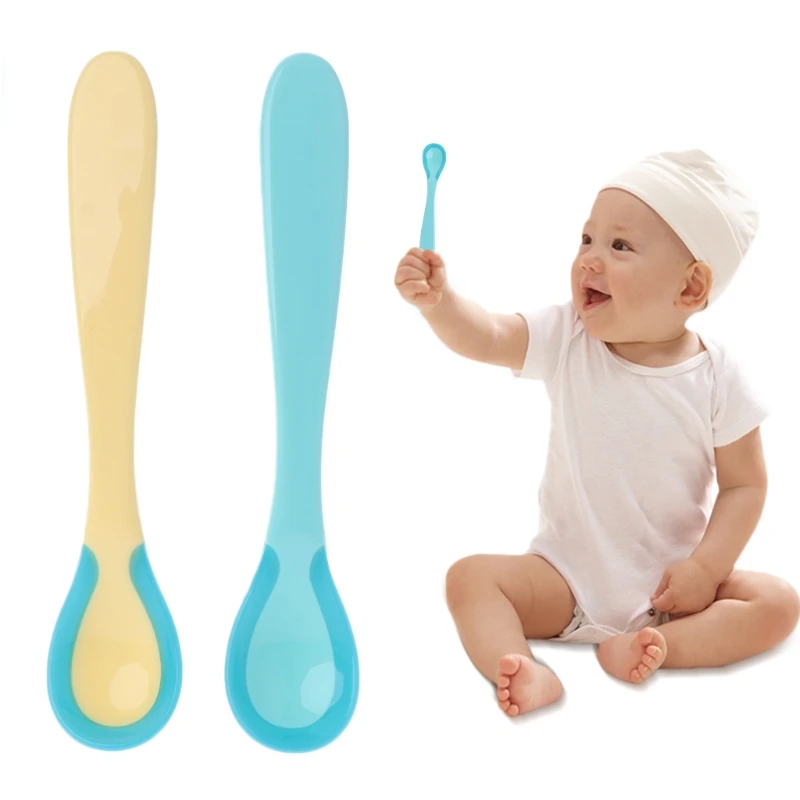
MUAC (Mid-Upper Arm Circumference) Tape is a tool used in many countries around the world. It allows you to measure the circumference of the middle third of the shoulder -
an important anthropometric indicator, which depends on the nutritional status of the child. Its definition is useful for identifying children at risk for malnutrition (overweight or underweight). The measurement of the circumference of the middle third of the arm is as sensitive and effective as the assessment of the body mass index, and is recommended by WHO for determining the nutritional status of a child.
The tool is easy to use: the measurement is carried out quickly, without the need to completely undress the child. A simple color indication on the tape allows you to quickly determine how much the child's performance differs from the norm. Such ease and speed of use allows you to identify malnutrition of the child at an early stage, eliminate the cause of their development in time and, if necessary, correct the child's nutrition.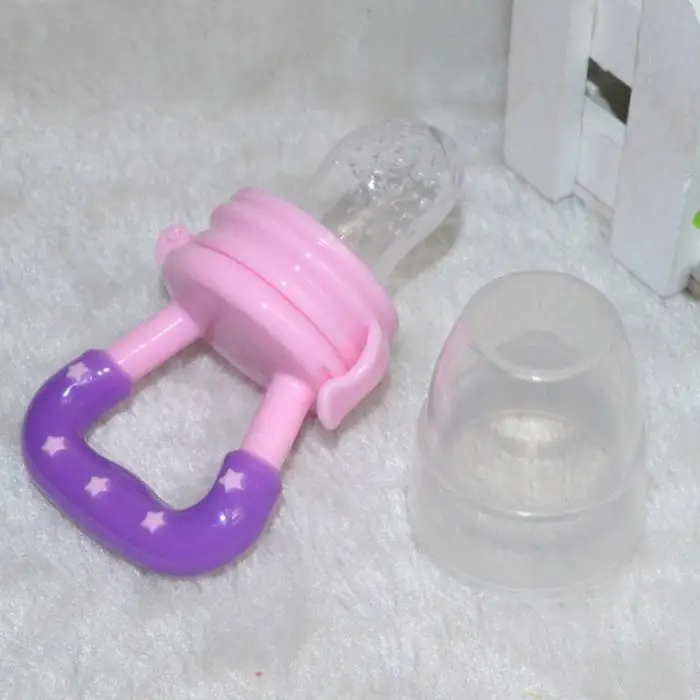
“Unfortunately, in real life, I often see that a pediatrician at the site has limited time for a consultation of one child, and often it is not enough for a complete assessment of anthropometric indicators,” says Irina Nikolaevna Zakharova, MD ., Professor, Head of the Department of Pediatrics. Academician G.N. Speransky FGBOU DPO RMANPE of the Ministry of Health of Russia, "An important event was that pediatricians in Russia got access to a tool that allows you to quickly conduct the necessary screening of the child's condition, evaluate the Z-score and identify groups of children in the area who need additional nutritional support"
MUAC will be available in Moscow, St. Petersburg, Volgograd, Voronezh, Yekaterinburg, Kazan, Krasnodar, Krasnoyarsk, Novosibirsk, Perm, Rostov-on-Don, Samara, Ufa and Chelyabinsk. In the future, the list of cities will expand.
About Abbott
Abbott is a global leader in healthcare and helps people live life to its fullest.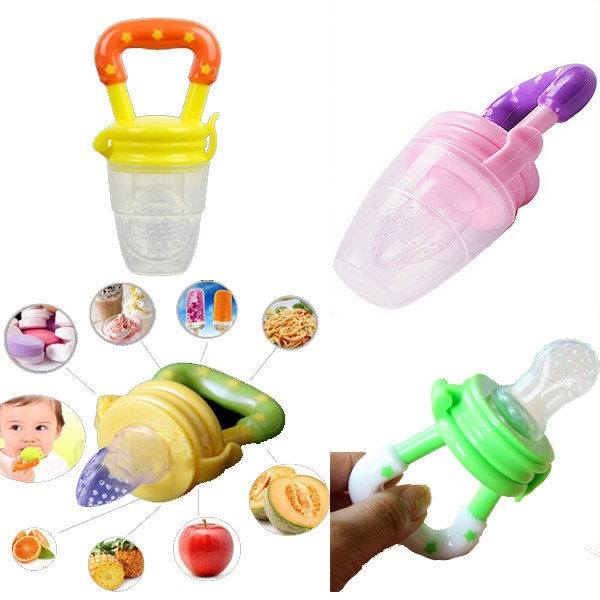 Abbott's life-changing technologies span a wide range of innovative products and solutions, including diagnostics, medical devices, nutrition and pharmaceuticals. 109000 Abbott employees work for the benefit of people in 160 countries around the world.
Abbott's life-changing technologies span a wide range of innovative products and solutions, including diagnostics, medical devices, nutrition and pharmaceuticals. 109000 Abbott employees work for the benefit of people in 160 countries around the world.
Abbott is an expert in formulating foods for children based on their specific nutritional needs. Abbott trademarks such as Similac and PediaSure are widely known in Russia.
Learn more: en.abbott, www.abbott.com
1 The Children’s Mercy Research Institute (CMRI) is an American pediatric research institute focused on improving the health and well-being of children around the world
2 WHO Guideline: Updates on the management of severe acute malnutrition in infants and children. Geneva: World Health Organization; 2013.
3 As we age, the incidence of underweight and height can reach 50%, Leat et al., 2012
4 There is an association between malnutrition and poor school performance, Leat et al.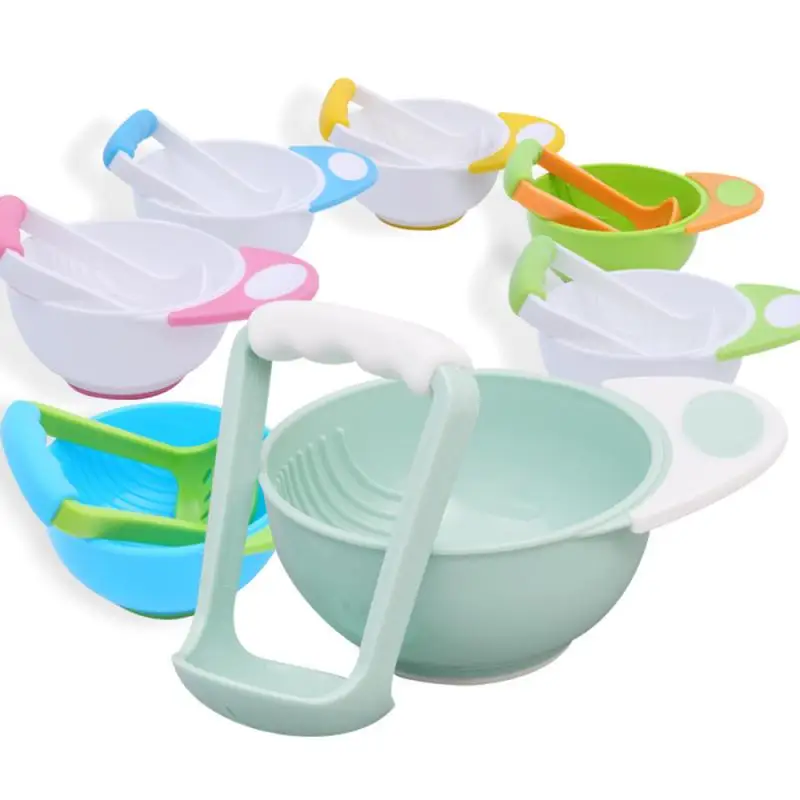 , 2012
, 2012
5 Alarcon, 2003
how to bathe, feed, clean the nose in 2022
Daily toilet: care for eyes, nose, ears, wrinkles
A child's morning should begin with the toilet of the eyes, ears, nose, folds. And this process should become a daily ritual.
Tools: cup of warm water, cotton pads, cotton buds with stopper, cotton swabs, baby oil or boiled vegetable oil, clean diaper.
Instruction:
- Eye care: moisten a cotton sponge in water, gently wipe the eyes from the outer to the inner corner of the eye, blot the remaining water with a dry disk. For each eye we take a new cotton sponge
- Nose care: for preventive purposes, it is not worth climbing into the nose once again. Examine the nose for the presence of crusts in it. If crusts are found, take a cotton flagellum, drop a drop of baby oil on it, and gently twist it into the nostril with rotational movements and remove it.
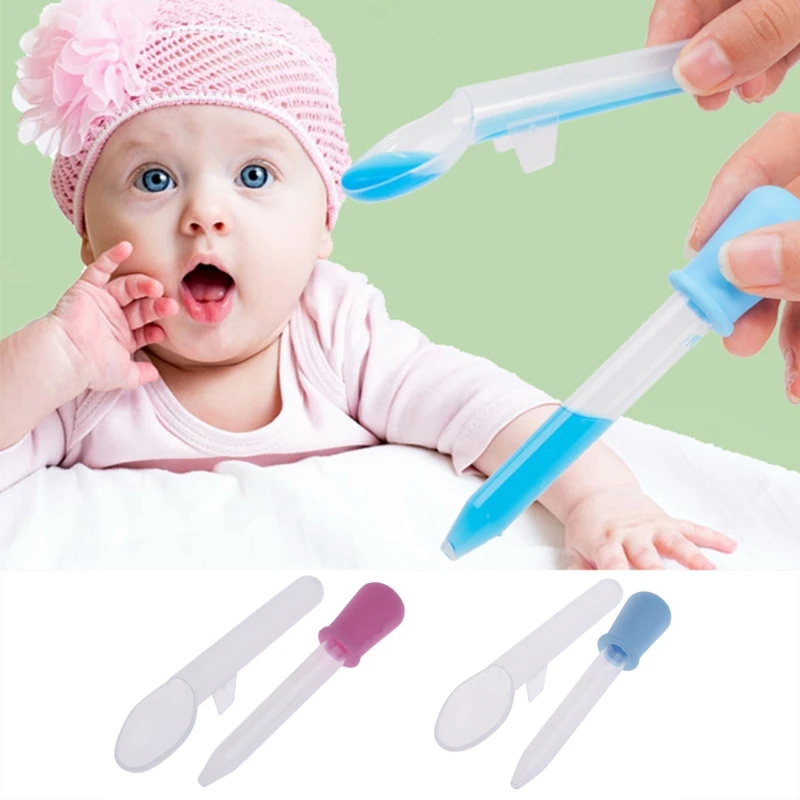 Similarly, in the second, with a separate flagellum.
Similarly, in the second, with a separate flagellum. - Ear Care: Inspect ears for wax. Take a cotton swab with a stopper and gently wipe the outside of the ears and at the entrance to the ear.
- Wrinkle care should be done in the morning and evening. Apply a thin layer of baby oil on a cotton pad, wipe all the folds on the skin: behind the ears, on the neck, under the armpits, in the elbow joints, under the knees, between the buttocks, the area between the fingers and toes.
- Washing: dip a cotton pad into a cup of water and wipe the face. Blot with a clean diaper.
Photo source: med.nochveg.ru
How to properly wash a newborn girl or boy?
Washing is an important process because two ideologies are fighting here: water and wet wipes. Of course, it is more convenient for mothers to use napkins, since they are always at hand, and there are prejudices to running water in the maternity hospital.
Photo source: evisun.ru
But experts advise to wash children under water, and leave napkins as a last resort when access to water is impossible (walking, nature). The components of wipes can cause severe diaper rash in a child, so it is better to choose hypoallergenic ones.
Tool: water, baby soap, wet wipes, clean diaper.
Briefing: take the baby on one hand so that his head is placed on your elbow, with the same hand, hold him firmly by the thigh, gently moving the leg to the side. Bring the child to running water and wash the perineum. Girls need to be washed away so that the feces do not get into the genital gap. Only use baby soap with string, chamomile, or aloe for stool cleansing, as constant use of soap can dry out the skin. Blot with a clean diaper.
Umbilical cord: treatment when it falls off
After toileting the skin and washing, it is time to treat the umbilical cord. The umbilical stump falls off 3-5 days after birth, leaving behind a small wound. Doctors forbid to tear off the stump on their own. The main condition for the healing of the umbilical wound is drying, which means that access to air is needed. This requires that the navel does not come into contact with tight clothing, and diapers have a cutout for the navel (Newborn series).
The umbilical stump falls off 3-5 days after birth, leaving behind a small wound. Doctors forbid to tear off the stump on their own. The main condition for the healing of the umbilical wound is drying, which means that access to air is needed. This requires that the navel does not come into contact with tight clothing, and diapers have a cutout for the navel (Newborn series).
Photo source: pipi.kz
Problems with the umbilical cord occur in two cases: when dirt gets inside and with enhanced disinfection (strong antiseptics). You need to take care of the navel in the morning and in the evening until it heals (7-21 days).
Instrument: two pipettes, a vial of brilliant green, a vial of hydrogen peroxide 3%, cotton swabs, cotton pads.
Briefing: An umbilical wound is a gateway to infection and must be monitored carefully. Take peroxide into a pipette, drip a couple of drops into the wound. Peroxide hisses and foams, crusts appear.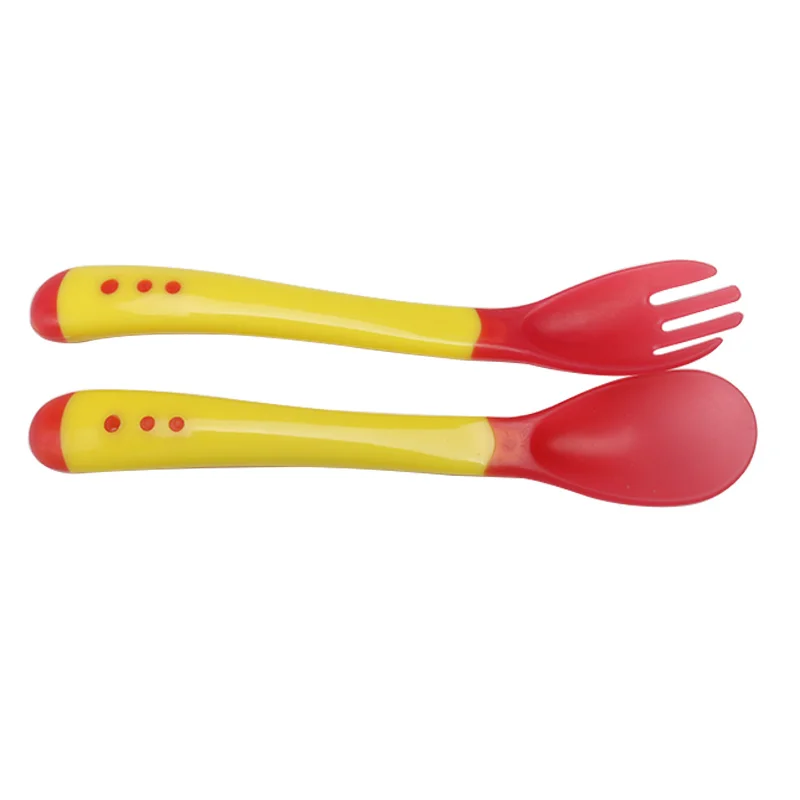 Take a cotton swab, carefully remove all the crusts, blot the remaining moisture with a disk. You collect brilliant green in another pipette, gently spread the navel with two fingers and drip it into the wound.
Take a cotton swab, carefully remove all the crusts, blot the remaining moisture with a disk. You collect brilliant green in another pipette, gently spread the navel with two fingers and drip it into the wound.
Mom's notebook: how to feed, whether to swaddle
During the stay in the maternity hospital, the mother has questions to the pediatrician, which must be voiced. Such questions could be:
- Weight loss . Physiological (normal) weight loss is considered to be a loss of 8-10% of body weight at birth. If the child has lost more than this norm in weight, this is an occasion to consult a doctor. Often the cause of weight loss above normal is fluid loss, so the baby should be applied to the breast as often as possible. We are not talking about water supplementation.
- Inoculations . According to the Immunization Calendar in Ukraine, a newborn baby is supposed to be vaccinated against tuberculosis (3-7 days) and hepatitis B (1 day).
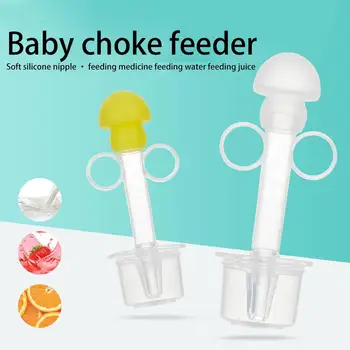 Doctors recommend these vaccinations, as the risk of infection outside the walls of the hospital increases dramatically. If you refuse vaccination, you will sign an official document stating the reason for the refusal.
Doctors recommend these vaccinations, as the risk of infection outside the walls of the hospital increases dramatically. If you refuse vaccination, you will sign an official document stating the reason for the refusal. - Swaddling. Doctors do not recommend tight swaddling because it restricts baby's movements. And free swaddling (up to the chest) is still practiced in maternity hospitals, it is taught to mothers so that they can decide what is more convenient for them: to swaddle or dress in clothes.
- Feeding. Maternity hospitals now have an on-demand feeding program, i.e. the baby is applied to the breast when he wants it. This is necessary for closer contact with the mother, to establish a lactation regimen.
We are at home!
When choosing household items for a newborn, you need to take care of naturalness: a bed made of wood covered with oil wax, a bed and clothes made of cotton, a hard mattress, no pillows and “dust collectors” (including protection and a canopy), high-quality toys
Briefing: Wet cleaning should be done twice a day.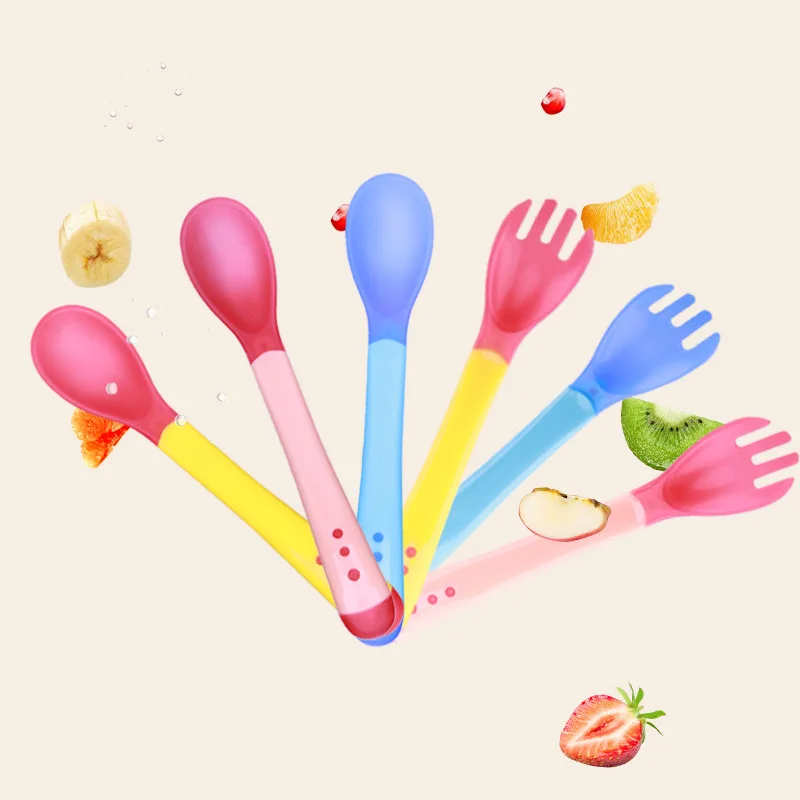 In the cold season, ventilate the room 6 times a day for 10-15 minutes, in the summer - the window is open all day, avoid drafts. The temperature in the room should be maintained at 18-22C and humidity around 50-60%. If possible, make the lighting in the room with smooth adjustment. Clothes and underwear for a newborn should be ironed on both sides.
In the cold season, ventilate the room 6 times a day for 10-15 minutes, in the summer - the window is open all day, avoid drafts. The temperature in the room should be maintained at 18-22C and humidity around 50-60%. If possible, make the lighting in the room with smooth adjustment. Clothes and underwear for a newborn should be ironed on both sides.
Visit to the doctor
Each maternity hospital has an authorized person who notifies the polyclinic at the place of residence about the discharge of a newborn child home. This is necessary for a pediatrician's home visit.
According to the Order of the Ministry of Health of Ukraine No. 149 dated March 20, 2008, under the age of 28 days you must be visited by:
| Child's age | Inspection | Place of inspection |
|---|---|---|
| Not later than the 2nd day after discharge from the hospital | Pediatrician | houses |
| One day after the doctor's visit | nurse | houses |
| 2 weeks | pediatrician | houses |
| 3 weeks | nurse | houses |
| 1 month | pediatrician | polyclinic |
The doctor will assess the baby's condition, talk about the nuances of caring for him, about the mother's diet, about massage and hardening.
Price comparison for tests for children:
- Urinalysis according to Nechiporenko
- Complete blood count
- Urinalysis
- Allergy tests
- Biochemical blood test
How to properly bathe a newborn?
Bathing helps the baby relieve stress, fatigue, harden the body. Pediatricians advise parents not to bathe the child in the immersion bath until the umbilical wound heals. In this case, the child should simply be wiped with a damp sponge. If you have hard running water, then doctors recommend boiling it for bathing. Swimming is prohibited on the day of vaccination. The time for bathing can be chosen either in the morning or in the evening shortly before feeding, but it should be constant so that the baby gets used to the regimen.
Photo source: kk.convdocs.org
Tools: bath (possible with a slide), diaper with a “corner”, sponge, baby soap and shampoo, scissors. As herbs, take a decoction of string and chamomile, a weak solution of potassium permanganate.
Briefing: Bath water must be 37°C. We add a decoction of herbs or a solution of potassium permanganate to the water (the water should be barely pink), stir and gently lower the baby into the water. Water the child, talk to him affectionately, then he will relax and calm down. With soap and shampoo, as well as potassium permanganate, the baby is bathed 1-2 times a week. Do not rush to take the child out of the bath, let him jump with his legs, this has a beneficial effect on the nervous system. After the bath, rinse the baby with clean water 1-2C below the water in which he bathed. Take out the baby in a diaper, covering the head, do not rub the skin, but blot it. After bathing, you can cut your baby's nails with special rounded scissors.
Newborn sleep
For proper development, the baby needs to establish a sleep pattern. There are children who sleep 15 hours a day, and there are 20 hours. If the baby is gaining weight well, eating well, but sleeping less than normal, this is considered normal.
The main guarantee of healthy sleep: a well-ventilated room without drafts, cool air and a good appetite. Try to lay the baby out to sleep on its side, placing a roll of towels or blankets under the back to prevent torticollis. After each feeding, change sides in turn. The choice of co-sleeping or sleeping in a separate bed or room depends only on the wishes of the parents.
Photo source: lisichki.com.ua
Teach your child to distinguish between day and night. To do this, during the day you should demonstrate everyday sounds to him (street noise, conversations, laughter), and at night there should be silence. Come up with a bedtime ritual: bathing, feeding, reading a fairy tale, a kiss goodnight, darkness and silence. The kid will gradually get used to the daily routine, and will not confuse day and night. When a baby reaches a weight of 5 kg, he can sleep comfortably all night without waking up to feed.


